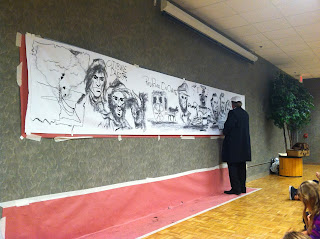You may have noticed at Back to School night that many of the walls in our classroom were "not decorated." No, that wasn't because I forgot or ran out of time, but I do consider our walls to be the location where we document and post resources of and for our learning. Anything that goes up is either created by students or with students as the foundation for a lesson, and is usually referenced many more times. Many of these pieces I call "anchor charts" because they do just that, anchor our learning. So, without students, I didn't have any charts to display for BTS Night. The same is not true today!!! Check these out!!!
In the first few days of school we devoted much of our time to building community and establishing our classroom routines, procedures, and expectations. We explored what it means to work collaboratively and even set mission and vision statements for our class. Here are a few snapshots of those:
Classroom Rules:
Mission & Vision
Read to Self Routines & Expectations:
Our goals for 4th grade:
Some of our first anchor charts from class:
(Yes, that really does say "Peopling" of the U.S. --- ask your child what that means!)
Thank you for your patience with the blog as we begin our year. I am absolutely loving working with fourth graders and "pushing them" to work diligently and think at higher levels. In the past I've tried to post 2-3 times each week, but with taking on all new curriculum, figuring out the ins and outs of a new district and school, and missing quite a bit of school due to a sick kiddo and meetings I just haven't been able to prioritize. Rest assured that, once again, I'm not being lazy, I'm simply spending all my time reading materials, researching resources, and planning instruction to engage and challenge my students. Over the next few weeks watch for our online classroom presence to increase pretty significantly. I can't wait to show you more!!!
(continue to ignore "ABCs of Grade 3" and avoid clicking on "email me")
































































